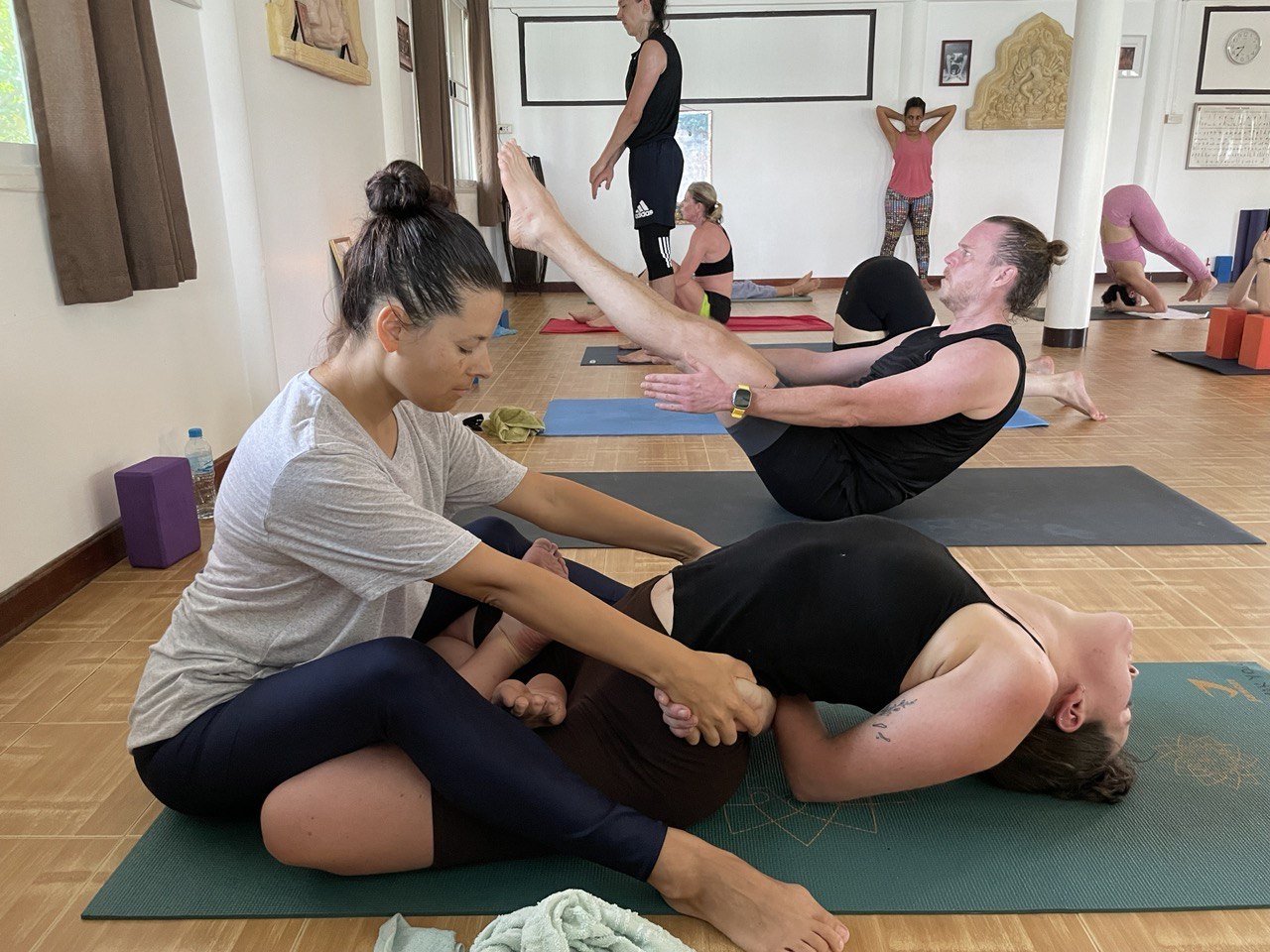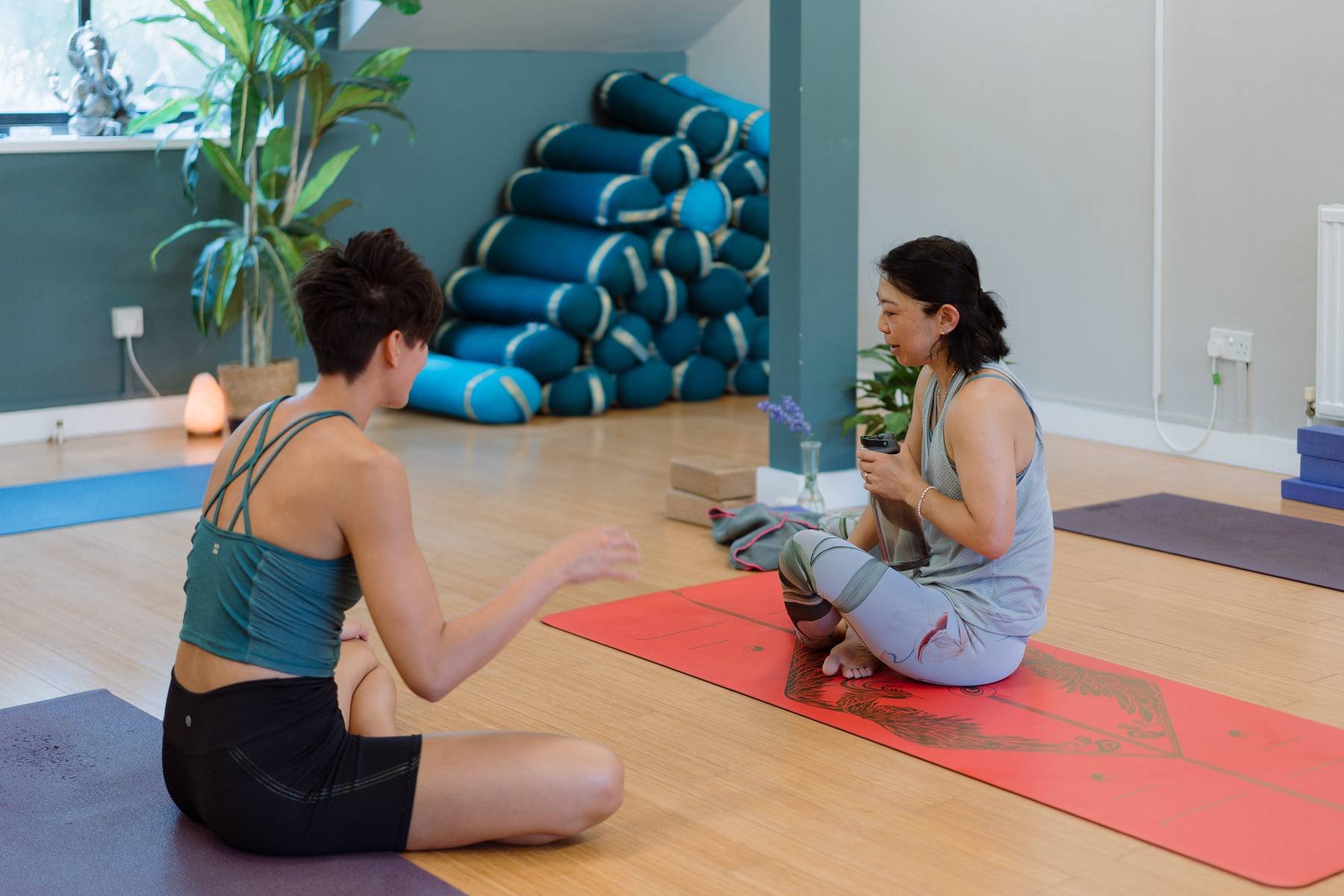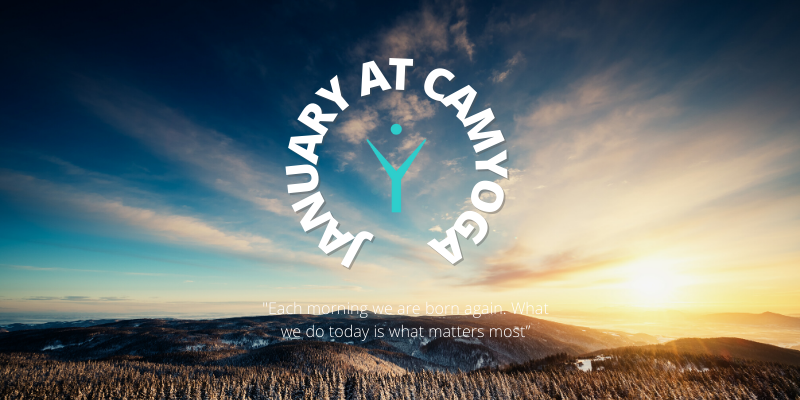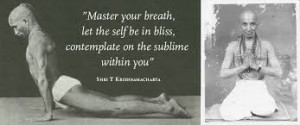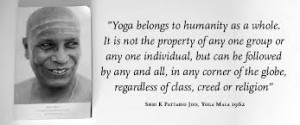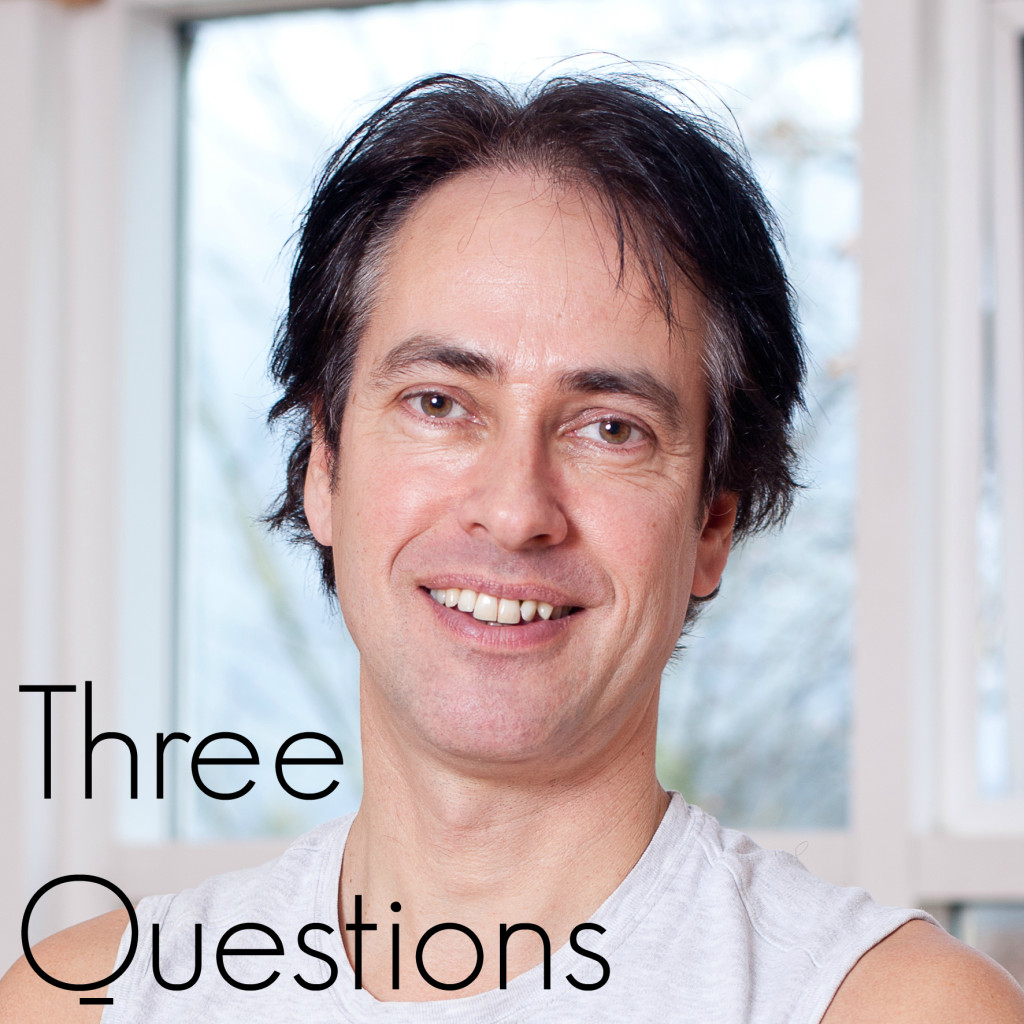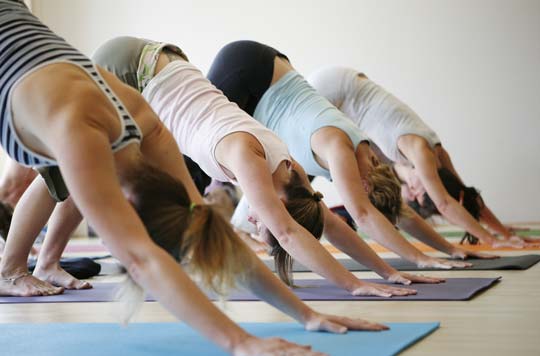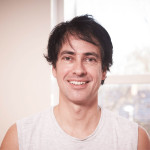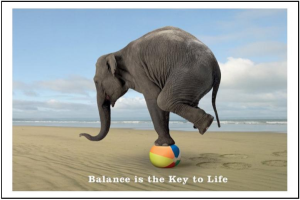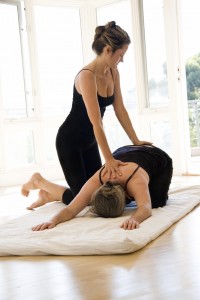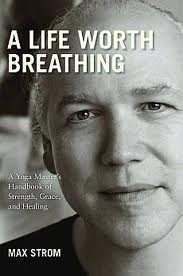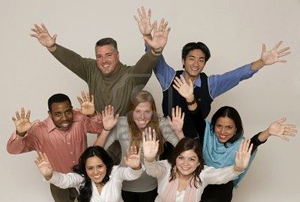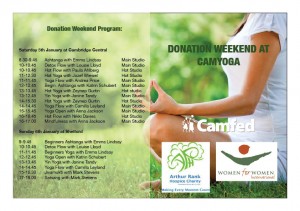Ashtanga yoga is a unique form of yoga in that the practitioner learns the sequence by heart and guides themselves through the series, with assistance of a teacher. This is a very powerful way to practice that develops svadhyaya – self-knowledge - very quickly, and encourages ahimsa – non-harming – by paying deep attention to the body’s sensations and feelings during the practice, and adapting in terms of energy, physicality and duration, according to each day. There are many conventions around the practice that come from its long history of development in Mysore, India through the lineage of Krishnamachayra and its subsequent spread around the world.
How often should I practice?
Ashtanga Mysore practitioners at the studio
The practice is traditionally practiced 5-6 times per week, with one rest day, and an extra day of rest on the full and new moon – known as moon days. Some practitioners do practice on moon days but might be softer or a more restorative sequence. It is good to listen to yourself and follow your energy. Many practitioners practice with Sunday as the first practice day, and Friday as the last practice day, or Monday as the first practice day and Saturday as the last practice day. But you can choose what makes sense to you. Traditionally, the last practice day is primary series, and if you are a primary series practitioner this is still what you would do, perhaps doing a bit less, trying to stay on the vinyasa count, with no extras or experiments.
Beginners might start with practicing 2-3 times per week, and as strength, stamina and confidence increase, the practice days can also increase. It is good to take your time through, perhaps take 6 months to build from a 2-3 day a week practice to a 5-6 day a week daily practice.
At CAMYOGA, there are led classes and mysore classes, and it is great to combine these, attending the led class once a week, the mysore class once a week, and then practice at home once or twice a week.
When should I practice?
The practice feels best when the stomach is empty. For this reason, many practitioners practice early in the morning before breakfast. Evening practice, before eating, is also beneficial. As a guide, a 3-4 hour break between eating and practice is helpful. During the practice, do not drink, if you can – try to keep the stomach clear and digestion quiet.
What are the foundations of the practice?
Ashtanga yoga is sometimes known as the tristana method in that there is the integration of three actions throughout the practice: breath, bandha and drishti. The breathing pattern of the practice is codified with a count for every single inhale and exhale from the first sun salutation to the last breath before the rest at the end. As we learn the practice, it is natural to take extra breaths and not always stay on the breath count but as experience develops, so does alignment with the breath count. The bandha is the way that we describe the engagement of the psoas, abdominal and diaphragm muscles, which is best explained by a teacher in the class setting. The drishti is where we focus with our eyes, and every vinyasa and asana of the practice has a specific drishti, which helps to keep balance and the mind focused. There are so many details that often a teacher will just introduce these to you gradually, so that your practice becomes more and more precise and refined, while still giving you the space to flow through the practice in your own time.
How long should I practice, and which asanas should I do?
Every practice usually contains the sun salutations, the standing asanas, some portion of one of the series, or a complete series, and then the finishing asanas. A short practice of twenty minutes would include the sun salutations and the finishing asanas. A more medium length practice of 30-45 minutes would include sun salutations, the standing asanas and the finishing asanas. Some practice is better than none at all, so a short practice at home is very beneficial and keeps the mind and body focused.
Where should I stop?
There are lots of conventions around where to stop in the ashtanga practice. Some teachers believe that the previous asana should be very stable and consistent before the next one is attempted. Some teachers encourage exploration of the series more holistically. What is more important is that you feel a clear purpose in the way that you practice, and that you feel energised by your practice. I have practiced in the very strict way and in the more liberal way. My experience of being stopped until I achieved a level of stability an asana in my body was that it helps to build the energetic qualities of the practice and encouraged deep focus. In the more liberal way of practicing, asanas beyond where we are currently struggling with an asana can help to acclimatise the body to some of the patterns that are needed for the more challenging asanas, but sometimes this can make the practice too long, so you can also choose to practice these asanas at another time from your practice. The practice should flow with the vinyasa count, and this is helps to develop the moving meditation quality of the practice, as well as keep the heat in the body. The quality of the practice is something to consider. It is ok to do a few asanas with exploration and warm ups, but the practice can lose its flow, and the body becomes cold, when there are many asanas like this. If you are unsure, you can definitely talk to the teacher about how much to practice and what you would like to practice.
Stopping at an asana is also to do with safe practice. For many practitioners, where to stop is clear because the asana is very difficult or almost impossible to do. The limits of the body should be respected and time taken to soften into or strengthen the patterns needed to support the safe execution of an asana. Props can be used and the assist of the teacher can also be helpful. Each body is different and so asana stability and proficiency is different for each person – it does not always mean catching the bind or standing up from the backbend. As a trauma informed teacher, I pay attention to each individual body and try to apply the principles of practice in a specific way that helps them.
How long does it take to learn primary series?
With a 5-6 day per week practice, it can take a practitioner 1-3 years to learn primary series. Progression should not be rushed and even a very able student should spend time practicing primary series for about a year before progressing further. Primary series is the foundation and root of all the other series. Primary series is also known as yoga chikitsa, which means yoga therapy. Yoga chikitsa calms the mind, pacifies the digestion, gives strength, clarity and resilience to the body and mind. A proficient primary series includes strength and consistency in vinyasa, a fluid flow through the breath count, and asana stability within the limits of your body. Further series are simply deepening the patterns of primary series. For example, pasasana is an extension of the patterns in marychyasana C and D, dwi pada sirsasana extends the patterns introduced in supta kurmasana. For practitioners who have been practicing primary series for a long time, adding some second series asanas, such as the earlier backbends, and some of the seated postures can be beneficial. As proficiency develops, we can let go of the props and need less assistance from the teacher. We can then focus on the breath, vinyasa count and flow of the practice.
Can I practice during menstruation?
Female practitioners may opt to take days off from practice when they are menstruating – known as ladies’ holiday or I like to call it ladies’ festival. Some women find relief in the rest around their period and others find that practicing is helpful. The sequence can be varied, asanas skipped, and a restorative sequence also practiced in place of the regular sequence. Key asanas for menstruation can include badha konasana (seated and reclined), upavista konasana, bhujipidasana, prasarita padottasana with the head supported on a block. Because of the use of the bandhas (muscle locks in the core that draw upwards), Ashtanga yoga can emphasise pranic energy – energy that moves up – and during menstruation, apanic energy – energy that moves down - is generally more dominant, so this can be supported by changing the focus of the practice – softening and releasing bandha, and encouraging down focus in the energy. I am a restorative yoga teacher as well as ashtanga teacher, and can guide you in a restorative sequence in the mysore class, if you wish.
Can I practice during pregnancy?
Practice is not advised during the first trimester. After that, you can ask a teacher to advise you on how best to practice. It is also not advised to practice ashtanga yoga during your pregnancy if you have never practiced ashtanga yoga before.
Thank you, Tamara for sharing this amazing guide to Ashtanga Yoga with us!
Tamara teaches the Ashtanga mysore classes on Sundays 7-9am.
Ashtanga Schedule
Tuesdays 18:15 - 19:30 (Led class)
Fridays 13:00 - 14:15 (Led class)
Sundays 7:00. -9:00 (Mysore class)




